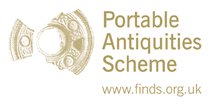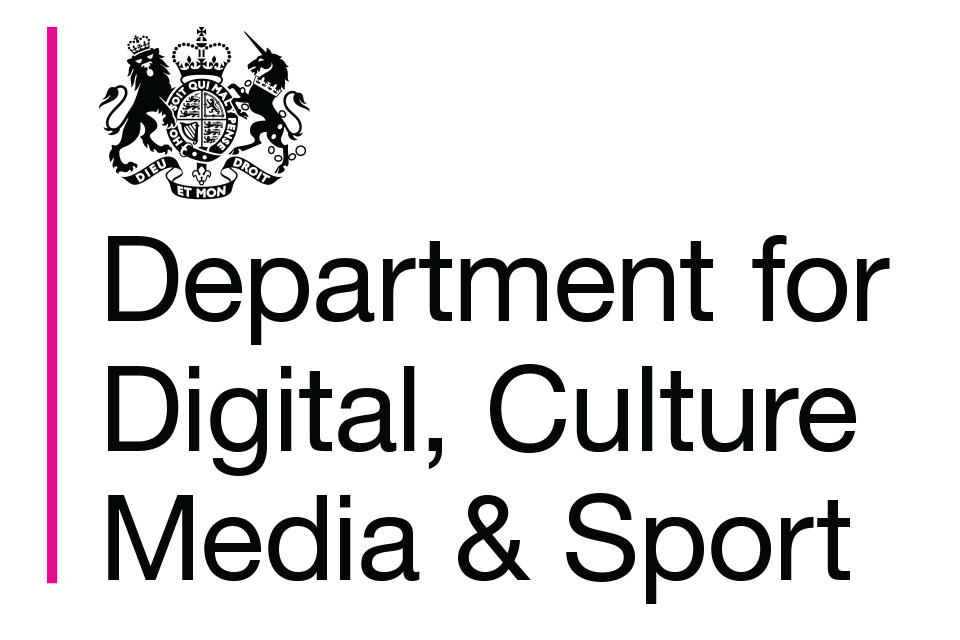In this section you can find some ready-made activities to use in your teaching, as well as some ideas for future activities/sessions. We are always interested to hear how people use archaeological objects to inspire others, so if you have an activity you’d like to share with us please don’t hesitate to get it touch.
For a list of database searches relating to specific time periods or themes, please see our Explore! page. Here you will find links to examples of objects from specific historical periods or relating to themes such as identity, clothing, religion and trade.
General
Click the link below to download our finds-themed word-searches. They are a fun way to introduce some of the terminology and you can look up examples of the object on the PAS database afterwards.
Click the links below to download our finds-themed colouring sheets.
Craft Activities
We have collated all of our craft activities into one post which you can access below:
Boredom Busters 2.0
Romans
The Romans period in Britain traditionally begins with the invasion in AD 43 and ends with the emperor Honorius directing Britain to see to its own defences in AD 410.
To search for all objects on the PAS database relating to the Roman period, click here.
Anglo-Saxons
The Anglo-Saxons were a group of people who lived in Britain over 1600 years ago. Their culture came from three tribes living in northern Europe: the Angles, the Saxons and the Jutes. People from these tribes, and probably others too, came over and settled in Britain forming a new society known as the Anglo-Saxons. We use the term Anglo-Saxon to refer to the culture and Early Medieval to refer to the time period. Here are some resources and activities relating to the Early Medieval period and the Anglo-Saxon culture in Britain:
To search for all objects on the PAS database relating to the Early Medieval period, click here.
Medieval
The Medieval period begins with the Norman Conquest in 1066 and ends in 1539 with the dissolution of the monasteries.
To search for all objects on the PAS database relating to the Early Medieval period, click here.
The Portable Antiquities Scheme and Archaeology
Archaeology is a multi-disciplinary subject that can be related to many areas of the national curriculum (see the section on why to include archaeology in your teaching here). As a discipline, it requires good observational and critical thinking skills, as well as communication skills.
The following activities are concerned with observation skills and the physical characteristics of archaeological objects:
The following Treasure activity takes the observation skills and reasoning further by asking children to assess the object against a set of criteria to determine whether they fall under the definition of Treasure or not. To learn more about Treasure visit this page.
The activities below introduce the idea of object biography and encourages children to look beyond the physical characteristics of the object and think about how and why it may have been used in the way it has.
The following activity is designed to help users learn how to search for items on the PAS database. It is recommended that they watch our short video about this first, which you can find here.
The following information and activity introduces the concept of hoards. Hoards can tell us a great deal about past peoples and their activities, and are an important and interesting phenomenon that is particularly prevalent in the UK.
Ideas for Lessons/Activities
The ideas and suggestions below are aimed at the national curriculum requirements for Key Stages 1 and 2, but could be extended and adapted for later stages too.
English
The objects on the database provide rich inspiration for a variety of written activities:
- Composition – select an object from the database and write a short narrative or poem about it. You could start with the “peopling the pot” activity above to kick-start the inspiration process.
- Real events – many of the objects on the database can be linked to real events that took place in the part and could be incorporated into writing about them.
- Vocabulary – archaeology in general is full of new words and exploring the database can help introduce new words in a different way.
- Audiences – there are many different audiences for archaeology, from the general public to research specialists and information has to be presented differently for each. It is also presented differently for different purposes e.g. a museum display or a site report. Ask children to think about who uses our database and why, and how might we present information differently to each of them. You could also ask them to look at a database record and say who they think it was written for.
Maths
There are all sorts of ways the database could be used to add a new dimension to Maths lessons.
- Quantities and measurements – all objects recorded on the database are weighed an measured. Some objects, such as coin hoards have a combined weight, as well as individual weights for each coin. You could also look at the quantities of different types of object on the database. For example, which objects are there most of/least of? how many gold objects are on the database? and so on.
- Shapes – database objects can be used to demonstrate various geometric (and other) shapes. These objects provide a different and fun way to explore shapes.
- Money – there are over 450,000 coins recorded onto the PAS database, so plenty of examples ancient and more modern. You could also explore the concept of denominations further by looking at Roman coin denominations using the information sheet in the Romans section above.
- Sequencing of events in chronological order – you could use our timeline game to ask children to put historic period in correct chronological order.
- Duration of events – the information on the database is split into broad historical periods of differing durations. Ask children to work out the durations of each and which was the longest/shortest. Use the timeline here to help.
- Displaying data – the information from the database can be organised in many different ways. You could ask children to list the different categories of data on the database and to organise it into simple tables. For example, they could create a table of all the different periods and the number of objects recorded from each period.
- Fractions – you could demonstrate fractions using cut pennies from the Medieval period (halves and quarters).
- Co-ordinates – all objects recorded on the database must have a findspot. This is usually a 6-figure national grid reference but you could also write them as coordinates.
- Displaying data – the data from the database can be presented in different ways, from bar charts to pictograms to tables.
Science
Archaeology is a multi-disciplinary subject that involves a lot of scientific methodology. It is therefore ideal for incorporating into science lessons.
- Working scientifically – there is plenty of scope for children to observe the world, be curious and ask questions about archaeology and the objects on the database.
- Identifying and classifying – classification is an important concept in archaeology and all objects recorded on the database have been identified and sorted in several ways.
- Identifying materials – all objects on the database are made from a material. You could ask children to identify what materials objects are made from, to compare them and to group them together. You could extend learning by asking them to compare the suitability of materials for different uses – for example, why are there no gold axes? Ask them to think about why a particular material was chosen to make a particular object.
- Presenting information – students could create a record for an object, including measurements and other observations. Or they could create tables and charts of data from the database.
- Scientific methods – creating a database record involves various scientific methods. By using our object recording sheet below, children can practice some of these, including drawing and labelling diagrams. The activity could be extended further by asking them to create a report that includes graphs, tables, diagrams and using evidence.
The activity below can be used to practice classification skills:
You could also use the images from our PAS Snap! game to explore identification, classification and materials:
Our object recording activity provides the basis for exploring scientific methods:
Our Finds Liaison Officer activity expands on this by asking children to put their knowledge into practice:
History
History is perhaps the most obvious subject that Archaeology and the PAS database could be applied to. The objects on the database span all British historical periods covered by the national curriculum so could be used to demonstrate many aspects. For example, you could look at people depicted on coins and medals. You could also find objects relating to various events and anniversaries, or you could get students to create timelines.
- Ancient civilisations – there is material on the database relating to ancient civilisations, particularly ancient Rome. This could also be incorporated into discussions of the rise and fall of empires.
- Continuity and change – the object types on the database span various periods of history so are well-placed to be used to demonstrate continuity and change. Our object guides are useful for exploring this further as they provide historical overviews of object types and are a quick way to examine change and continuity over time. Find them here.
- How we find out about the past – the PAS database contains many examples of how we find out about the past. In fact, it is a resource in itself.
- Events beyond living memory – the database contains objects relating to events beyond living memory, including festivals, anniversaries and significant individuals. They can provide concrete examples of things from beyond living memory.
- Local history study – the information contained on the database is optimised for studying local history. Objects can be filtered by county, for example. We also have our County Pages section for each county to help you delve further in the history of your local area.
Languages
Many objects on the database have inscriptions from different languages on them. For example, seal matrices often have text in French or Latin.
Geography
- Land-use – finds on the database come from various types of land, predominantly cultivated. This could be used to talk about the different ways in which we use land.
- Grid references – all finds on the database have to have a 6-figure national grid references. You could get students to plot these on a map using real finds.
- Cultures – some of the material on the database can be assigned to historical cultures e.g. Anglo-Saxons. You could use objects on the database to map out where different cultures lived in Britain.
Design Technology
All of the items on the database are man-made, so there is plenty of scope to study different manufacturing techniques from the past. For example, flint-knapping or metal-working. You could also look at the technology of different objects, for example the fastening mechanisms on brooches, and ask them to evaluate the designs.
Art and Design
As with English, the objects on the database provide inspiration for creative work. For example, you could ask children to draw, paint of sculpt objects using examples from the database. See above for some of our craft activities.
Computing
The database is an online resource and an example of using technology to create, organise, store, manipulate and retrieve data. It demonstrates use of IT beyond the school environment and also requires students to use search skills effectively.
See the resources below for information and activities on searching the database:



